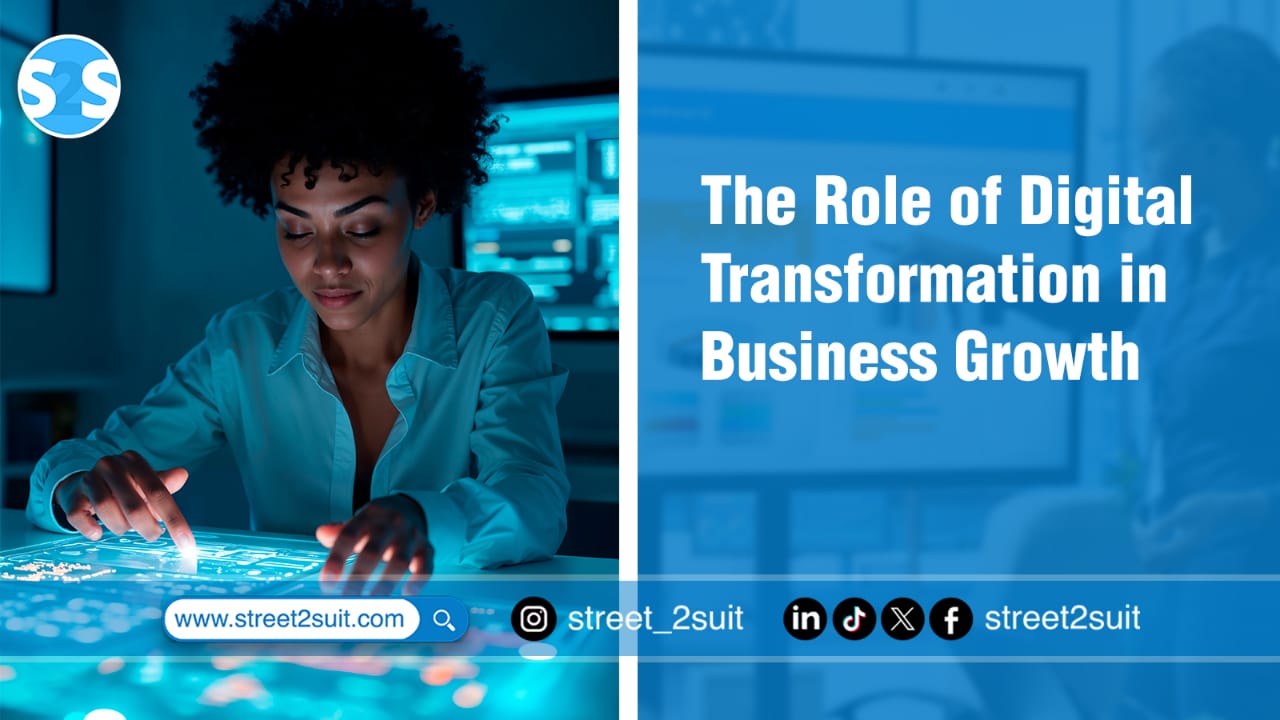If business growth used to be about having the best location, the biggest billboard, or the lowest prices, today it’s about something else entirely: how well you use technology to work smarter, serve better, and adapt faster.
That’s where digital transformation comes in. It’s not just a buzzword or a fancy IT project, it’s a mindset shift that touches every part of your business. Whether you’re running a global corporation or a small shop in your neighborhood, how you embrace digital tools can determine whether you thrive or get left behind.
What Is Digital Transformation?
At its core, digital transformation means integrating digital technology into all areas of your business, not just your website or social media, but the way you deliver value, communicate with customers, manage operations, and even think about growth.
It’s the difference between:
A travel agency that waits for walk-ins and one that lets customers book, reschedule, and pay for trips online.
A retail store that relies on foot traffic and one that also has a smooth e-commerce system with nationwide delivery.
A manufacturer guessing production needs and one that uses data to forecast demand and reduce waste.
The key isn’t the technology itself, it’s how you use it to make your business more agile, efficient, and customer-focused.
Why Digital Transformation Drives Growth
Growth is more than increasing sales—it’s about improving the capacity to serve customers, enter new markets, and stay relevant in a changing world. Here’s how digital transformation plays a direct role.
1. Enhancing Customer Experience
Today’s customers expect speed, convenience, and personalization. They’re not comparing you only to your direct competitors, they are comparing you to Amazon’s delivery speed, Netflix’s personalization, and Apple’s customer service.
Digital tools helps you:
- CRM systems to track customer interactions and tailor offers.
- Provide chatbots and AI-powered support for instant help.
- Collect feedback through online surveys and act on it quickly.
A business that understands and responds to its customers builds loyalty. Loyal customers spend more and refer others.
2. Improving Efficiency and Productivity
Manual processes can slow you down, drain resources, and increase errors. Automation, cloud-based systems, and workflow management tools can turn a messy process into a smooth operation.
For example:
- Automating invoices means faster payments and fewer mistakes.
- Cloud collaboration tools let teams work from anywhere without losing track of files.
- Inventory management systems can prevent both stockouts and overstocking.
When your team spends less time on repetitive admin work, they have more time for strategic, revenue-driving tasks.
3. Making Smarter Decisions with Data
Gone are the days when business decisions were based solely on gut feelings. Digital transformation puts real-time data at your fingertips.
You can:
- Analyze sales trends to know which products to push.
- Track marketing campaigns to see which ones convert best.
- Use predictive analytics to prepare for seasonal demands.
With data, you reduce guesswork, spot opportunities early, and avoid costly mistakes.
4. Opening New Revenue Streams
Digital transformation doesn’t just improve what you already do, it can help you do new things.
For example:
- A fitness trainer can launch virtual classes and reach clients worldwide.
- A restaurant can create a meal subscription service.
- A consultancy can sell online courses alongside in-person services.
When you’re not tied to one sales channel, your business becomes more resilient to market changes.
5. Staying Competitive in a Digital World
Let’s face it! Your competitors are probably already investing in digital solutions. The more they optimize, the more efficient and appealing they become to customers.
Digital transformation helps you:
- Respond faster to market changes.
- Introduce new products or services quicker.
- Keep your brand visible and relevant.
Falling behind digitally isn’t just missing out on growth, it’s risking your survival.
Real-World Example: A Small Business Success Story
Take the story of a small boutique clothing store. For years, they relied solely on walk-in customers. When the pandemic hit, sales dropped sharply. Instead of closing shop, they launched an Instagram store, partnered with a delivery service, and started taking orders through WhatsApp.
In less than a year:
- Their customer base doubled.
- They began shipping nationwide.
- Social media brought in collaborations with influencers.
This wasn’t a tech giant, it was a small business using digital tools creatively to grow.
Challenges in Digital Transformation
It’s not all smooth sailing. Many businesses face hurdles such as:
1. Resistance to Change: Employees may feel overwhelmed by new tools.
2. Cost Concerns: Upfront investments can seem high (though returns often outweigh costs).
3. Lack of Skills : Not everyone knows how to use new systems effectively.
4. Integration Issues: Old and new systems may not work well together.
The solution? Start small, train your team, and choose tools that fit your actual needs not just the trendiest ones.
Steps to Start Your Digital Transformation Journey
You don’t need to overhaul your business overnight. Start with clear, intentional steps:
1. Assess Your Needs
Identify where your current processes are slow, costly, or frustrating for customers.
2. Set Clear Goals
Do you want faster customer service, more sales, better decision-making? Your goals will guide your choice of tools.
3. Choose Scalable Solutions
Invest in systems that can grow with you whether it’s a CRM, e-commerce platform, or project management tool.
4. Train Your Team
Technology only works if people know how to use it. Training is non-negotiable.
5. Measure and Adjust
Track the impact of changes, learn from feedback, and keep improving.
The Bigger Picture: It’s About People, Not Just Tech
It’s easy to think of digital transformation as purely technological. But at its core, it’s about people, how customers interact with you, how employees work, and how leaders make decisions.
Technology is just the tool. The mindset to adapt, improve, and innovate is what truly drives growth.
Conclusion
Digital transformation isn’t just for tech companies, it’s for every business that wants to grow in a fast-changing world. It helps you serve customers better, work more efficiently, make smarter choices, and open doors to new opportunities.
The question is no longer “Should we go digital?” but “How can we go digital in a way that fuels our growth?”
Start small, be consistent, and stay focused on your customers. That’s how digital transformation stops being a buzzword and becomes your growth engine.
Receive the latest job and career updates in your inbox, every week!


